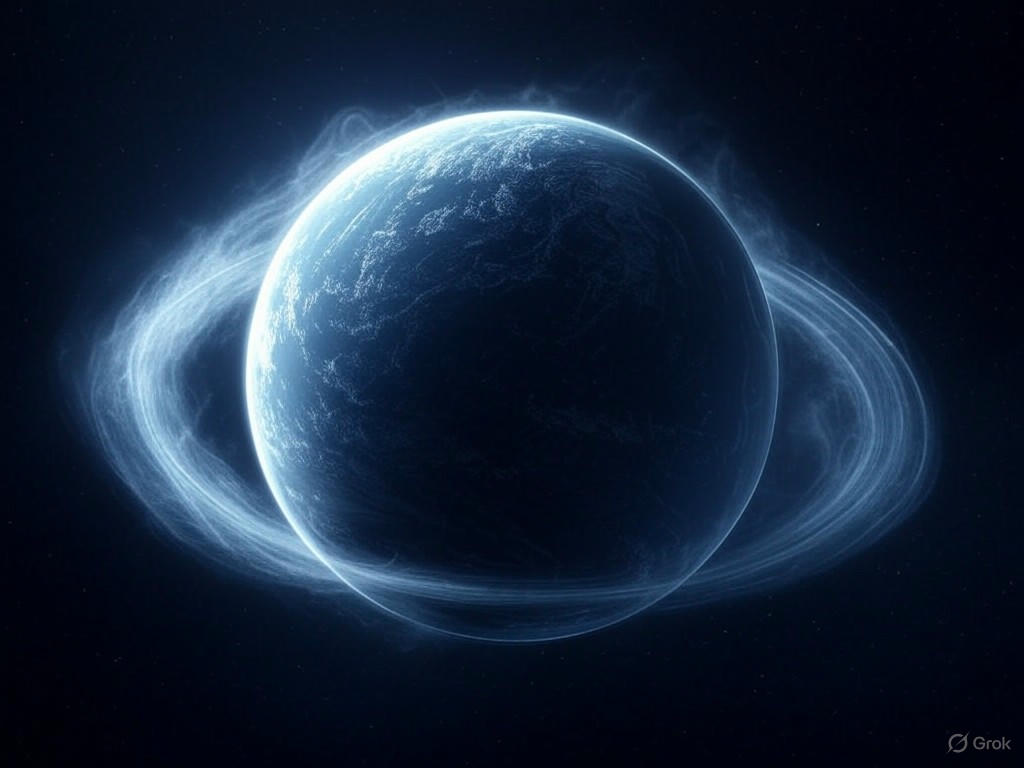A Glimpse Beyond: Webb Telescope Unveils Water Vapor on Distant Sub-Neptune Planet
The James Webb Space Telescope, humanity’s most advanced eye in the cosmos, has once again expanded our understanding of the universe. In a groundbreaking discovery, scientists using the telescope have identified water vapor in the atmosphere of a distant planet known as TOI-421 B. This hot, sub-Neptune world, smaller than the gas giant Neptune but larger than Earth, orbits a star far beyond our solar system. The finding marks a significant step forward in the search for habitable environments and offers a tantalizing hint at the diversity of planetary atmospheres in our galaxy.
TOI-421 B is not a place where humans could set foot. Classified as a ‘hot sub-Neptune,’ it endures scorching temperatures due to its close proximity to its host star. Yet, what makes this discovery so exciting is the detection of a hydrogen-rich atmosphere laced with water vapor—a combination that provides crucial clues about the planet’s formation and composition. Unlike the thick, opaque atmospheres of many gas giants, the relatively clear atmosphere of TOI-421 B allowed the Webb Telescope to peer into its chemical makeup with unprecedented detail. This clarity enabled scientists to confirm the presence of water molecules, a key ingredient often associated with the potential for life, even if the planet itself is far from habitable.
The significance of this discovery extends beyond the boundaries of TOI-421 B. Sub-Neptune planets, which fall between the size of Earth and Neptune, are among the most common types of exoplanets in our galaxy, yet they remain poorly understood. Many questions linger about how these worlds form and whether they could host conditions suitable for life under different circumstances. The Webb Telescope’s ability to analyze the atmosphere of such a planet opens a window into these mysteries. By studying the chemical signatures in TOI-421 B’s atmosphere, researchers hope to piece together the story of its evolution—did it form close to its star, or did it migrate inward over time? Could water vapor hint at processes like outgassing from a rocky core, or is it a remnant of a primordial cloud of gas and dust?
This remarkable observation also underscores the unparalleled power of the Webb Telescope. Launched to probe the farthest reaches of space and time, the instrument’s sensitivity to infrared light allows it to detect faint signals from distant worlds that were previously beyond our grasp. Each new finding, like the water vapor on TOI-421 B, builds on our knowledge of the cosmic neighborhood and fuels the imagination about what else lies out there.
As scientists continue to analyze the data from this distant sub-Neptune, the discovery serves as a reminder of how much there is still to learn about the universe. TOI-421 B may not be a second Earth, but its atmosphere offers a glimpse into the complex chemistry of alien worlds. With each observation, we edge closer to answering the ultimate question: are we alone in the cosmos?


